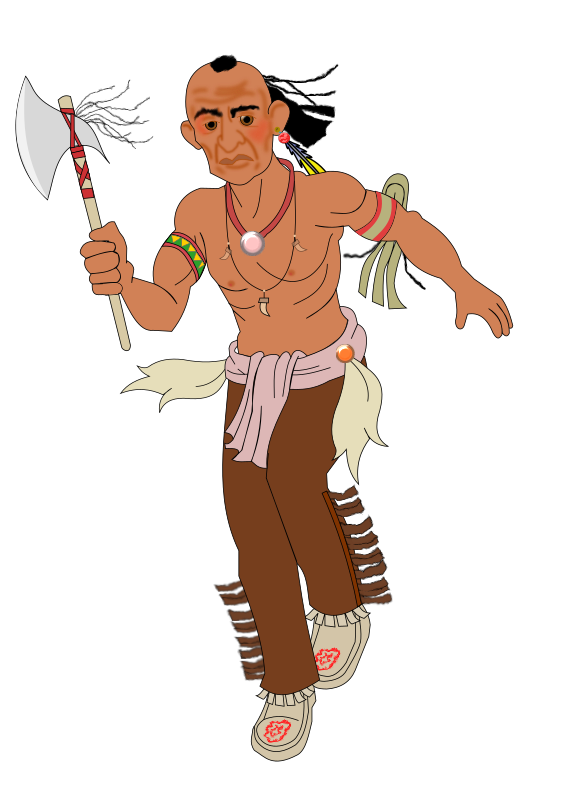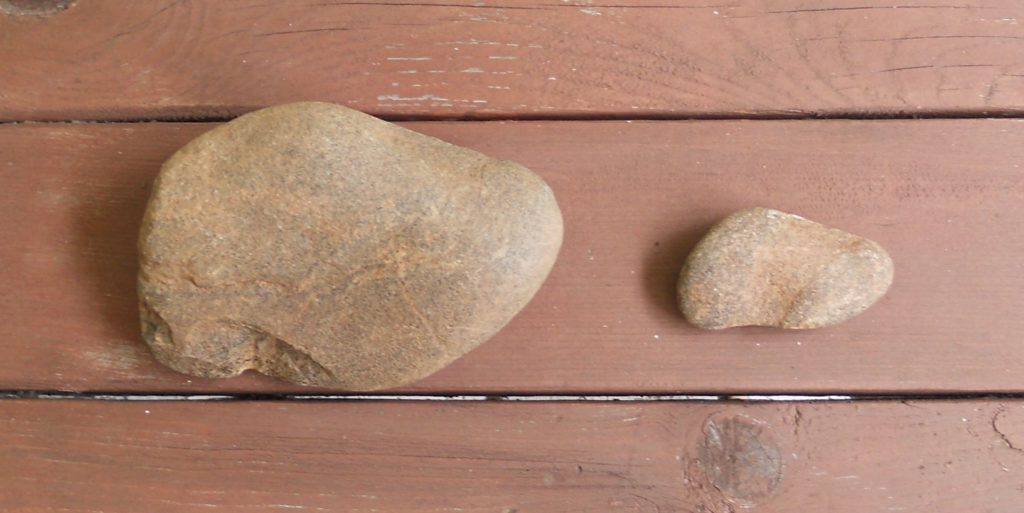FOR KIDS: THE STONE AGE

Thousands of years ago people lived in the Stone Age. We call it this because these ancient people made their tools from stone, instead of metal. By breaking and chipping rocks, these early men made knives, spear points, and other tools.
These early people were nomads. Throughout their lives, they walked to where there was food. They would hunt animals which were migrating to new areas as the seasons changed. Stone Age people also knew when berries, fruits, or vegetables would be ripe. This is why they kept moving, in order, to find their food. Later, people began to grow their food near their villages or towns.

The early Stone Age people lived in tribes. Tribes were made up of many family groups. When the tribes traveled to a new area, they would set up a village of tents or other shelters for their seasonal homes. Tents were made from animal hides. Natural materials, such as, wood or stone were used to make other types of homes.
TOOLS WERE MADE FROM STONE

Stone Age men made tools from stone to use for hunting and to defend themselves. Rocks were important to these men. They knew where to find good rocks to make their tools. This was another reason that these people traveled to different areas. Where men mined rocks for tools, it is called a quarry site.
Ancient men would make their tools from the rocks for different purposes. Some rocks were ground, in order, to be smooth when the men held these in their hands. The men made hammerstones and chopping tools by grinding their rocks into shapes. Ground axes were attached to handles. Other rocks were chipped or flaked to make sharp tools for hunting and for cutting. Spear points were attached to long spears which could be thrown at game animals from a distance.
WOMEN GATHERED FOOD
The women of the tribe gathered berries and other food from the wilderness. Acorns were ground with stone tools into flour to make bread. Women sewed animal hides to make clothing. Beads were also made to decorate clothing and to make necklaces. Baskets were woven from reeds to carry food when it was gathered. Later, women began to make pottery from clay. They made bowls and jars to contain food or water. Earlier, men had made bowls or trays from very soft rock, such as, soapstone.



CHILDREN IMITATED THEIR PARENTS

As the adults did their work, their children longed to imitate their mothers and fathers. Little girls were given dolls to care for like a baby. They also learned how to string beads and to sew. Little boys were instructed to make tools similar to their dad’s tools. The boys learned to grind their own small tools with soft rocks, like mudstone. As they grew older, the boys used hard rocks to make smaller versions of their dad’s tools. Their dads taught them how to use the tools to defend their tribe.




Young boys also began making toy versions of the men’s sharper tools. They thinned out softer rocks and learned how to make the same shapes as the men’s sharp knives and points. These toy versions were not dangerous like the men’s sharp tools. When the boys were older, they learned how to flake real sharp tools, just like their dad’s but smaller.
These ancient people used fire to cook and for heat. They also relied on fire for light during the darkness of night. Men made torches to carry at night so that they could see where they were going. At least one little Native American boy or girl had a toy torch which was made by a father or a brother. It looked like a flame made from softer rock. Also, it had a base which could be attached to a stick.



STONE AGE CHILDREN WERE NOT MUCH DIFFERENT
So, the Stone Age children were not really much different than children are today. They played, and they imitated the adults in their groups. However, the boys often made their own toys. Gradually, they began to learn how to produce the stone tools which they would need throughout their life.